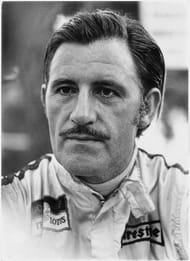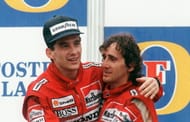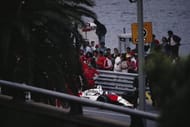The Monaco Grand Prix started way back in 1929 and is one of the oldest and most glamorous races on the calendar. Therefore, it is bound to have a rich line of memorable events. We divide them into two parts: in the first we concentrate on the exciting/funny ones while in the second we shall focus on the controversial/sad/unfortunate ones.
So let’s begin our journey into the rich history of the most famous race on the F1 calendar:
1929 is where it all begins….wait, we had a race in 1897 too!
Yes, 1897 was the first time that the city of Monaco hosted a motor race but it was not labelled as a “Grand Prix”. The funnier bit was that the race was won at an average speed of 30.06 km/h – that is the lowest speed that an F1 car can reach during a Grand Prix in the current era!
Homeboy hero
Some of the current day drivers (of different nationalities) reside in Monaco (attracted by the glamour and low tax rates) but once upon a time, even Monaco had its local boy racing on the streets of the principality. The “boy” was no other than Louis Chiron. Wondering whether you have heard the name somewhere before? You are right, he was the oldest driver to compete in an F1 race at the ripe age of 55 years and 8 months – which, again, coincidentally happened at Monaco itself. It is not that the guy raced only after reaching 50 though; he did win his home race in 1931 (pre-war races) and finished on the podium in 1950.
Unbelievable safety standards
There have been many “Regenmeisters” in the history of the sport and one of them was the pre-war race driver Rudy Caracciola. The whole world experienced the pathetic safety standards of that time when Rudy was carried in a chair – yes, chair- after having heavily crashed his Mercedes and being injured during the 1933 race.
Money talks
Initially when Anthony Noghès proposed to hold a Grand Prix inside the tight confines of the principality, he faced stiff opposition from the residents. But after they were paid a fair amount of money by the organizers, they agreed. Who wouldn’t want money in return for basically nothing?
Crash into the….water!
Nowadays, there are barriers all around the track which protect the drivers from exactly the same accident which Alberto Ascari in 1955 and Paul Hawkins in 1965 were involved in. At high speed, both lost control of their cars and crashed straight into the Mediterranean right next to the track. How both of them escaped without major injuries is a mystery.
Mr. Monaco
Many would think that this title should go to the late great Ayrton Senna for winning the race 6 times. But it was originally awarded to Graham Hill who mastered the track to win 5 out of 7 races in the dangerous 60s. One extremely funny incident in which he was involved was when he took to the escape road during the 1965 race just to avoid a backmarker! It seems that Graham Hill and Kimi Raikkonen would enjoy a good discussion about escape roads if they raced in the same era; who would be giving lessons to whom is debatable though.
The 1965 race
Along with the two above mentioned incidents – involving Graham Hill and Paul Hawkins – the race was also notable for the absence of Jim Clark who skipped the race as he was racing in the Indianapolis 500. Coincidentally, that year Clark became the only driver till date to win the famous oval race and the drivers’ world championship in the same year.
British Dominance
For 17 straight years (1958-1974) British cars won the Monaco Grand Prix. The winning teams were Cooper, BRM, Tyrrell, Lotus and Brabham (its base was in Milton Keynes even though its founders Jack Brabham and Ron Tauranac were Australian). Of those 17 races, more than half the wins were shared by the British drivers Sir Stirling Moss, Graham Hill and Sir Jackie Stewart.
Nose-less cars
With the track being so narrow, teams in the 60s got the unattractive idea of trimming the noses of their cars so as to reduce the chance of damage to the chassis, thus giving rise to hideous-looking cars. The performance should not have been affected much because till then the teams had not mastered aerodynamics and hence didn’t have wings on their cars.
Location for a film shoot
The Monaco Grand Prix was so famous all around the world that director John Frankenheimer decided to shoot a part of his 1966 classic “Grand Prix” at Monaco with a dummy race being staged just before the start of the actual 1966 Monaco Grand Prix.
Senna-Prost dominance
During the years 1984-1993, a staggering feat was achieved. Apart from Ayrton Senna and Alain Prost, no other driver won. Prost took the chequered flag 4 times while his arch rival went 2 better.
1982 classic
The 1982 Monaco Grand Prix was one of the most dramatic races of all time. The final few laps produced a tremendous number of changes in the lead – nothing like that had been seen before and has been seen since. With 4 laps to go, long time leader Alain Prost (who himself had inherited the lead from the non-finishing René Arnoux early in the race) spun and crashed. That gave the lead to Ricardo Patrese who too spun with 1 lap and a few corners to go. With that, things looked set for a Didier Pironi win but to the further amazement of the already confounded spectators he ran out of fuel on the last lap while manouvering the tunnel. That handed Andrea De Cesaris a golden opportunity but voila! he too ran out of fuel before he could overtake Pironi. Now with everyone watching absolutely bewildered, Patrese somehow bump started the car and took the chequered flag, thus finally ending all the suspense.
Home sweet home!
Monaco has been home to many drivers down the years and with the city being a small one, its apartments have always been close to the track. Ayrton Senna gave a demonstration of that when he went straight back to his house after crashing out from the lead of the 1988 race.
Panis’ first and only win
In another of those drama-filled Monaco races, Olivier Panis in 1996 took his first and only victory. He achieved that starting 14th having benefited from retirements of provisional leaders Michael Schumacher, Damon Hill and Jean Alesi. Another interesting fact about that race is there were only 4 classified finishers – joint lowest along with the 1966 edition of the race.
Hamilton’s 2008 masterclass
In the torrential rain, Lewis Hamilton achieved one of the most spectacular victories ever. Having lost a tyre after crashing into the barriers at Tabac early in the race, he took full advantage of the safety car conditions and with his race engineer, judged the switch-over to dry tyres perfectly to win his first race in the Principality.
Alonso and Schumacher: Drives through the field after starting from the pitlane
Although having started from the pitlane for completely different reasons (Schumacher – penalty; Alonso – damaged car), Schumacher in 2006 and Alonso in 2010 put in stellar drives to finish 5th and 6th respectively on a track where overtaking is near impossible. No wonder they are considered in the league of the greatest drivers ever!
So with that we come to an end of the first part of this journey. Next time we shall look into the more controversial and unfortunate incidents that took place during the past Monaco Grand Prix weekends.



